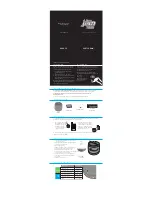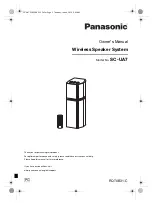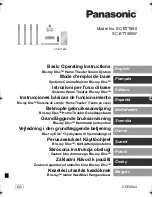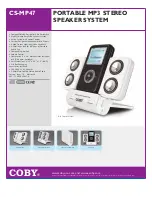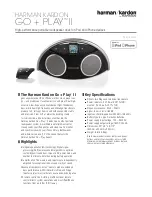
3
4
Operation
Battery
Charge the battery for at least 10 hours before using the PA919 or PA919PS. Simply plug the power cord into an AC outlet
and charging begins automatically. The charging indicator will flash until fully charged, then it will stay green. The unit
can be used while it is plugged in for charging.
There are two indicators above the main power switch. When the unit is turned on, the one on the left will light “red”
when the battery has a low charge. The one on the right will light “green” if the battery is fully charged or if operating
on A/C power.
It is recommended that the battery be recharged after several hours of usage, rather than stored with a low battery. This
will prolong battery life. Storing more than 30 days without recharging will deteriorate the battery. Battery life naturally
deteriorates over the lifespan of the battery. Usage time will also begin to deminish depending on the conditions.
Digital Master Volume Control
When the main power switch is turned on, the Digital Master Volume Control is at the lowest level to prevent accidental
damage to the amplifier or internal speakers. The volume can be controlled in two ways; using the “Up” “Down” buttons
on the mixer panel or using the RC-300 infrared remote control. The remote sensor must be used in front of the speaker
as the sensor is behind the speaker grille.
Recommended Set-up Procedure
It is suggested that prior to turning the main power on, the UHF receiver volume controls be set at “10 o’clock”. Also set
the microphone volume controls at “10 o’clock”. Turn on the main power switch and use either a wireless microphone
or cabled microphone to adjust the master volume.
Tape & CD
The main power switch does not control the CD and tape recorder. A separate power switch is combined with the
Tape/CD volume control to limit battery drain when the Tape or CD are not being used. To operate the tape and CD
players, first turn on the main power switch then rotate the Tape/CD volume knob clockwise to power them, and
increase the volume to the appropriate level. The red power LED will light below the knobs.
Wireless Receivers
There are two (2) independent combination XLR/1/4” jacks for using microphones with cables. Each jack has a volume
control which effects the loudness of both wired and wireless microphones. Also each has a “Voice/Music” switch.
On “music” program the sound is full fidelity, while on “voice” the sound is tailored to give maximum projection while
limiting battery drain.
Operation
continued
Line In
Insert both RCA plugs into the RCA jacks when using a stereo input. The left and right channels are combined so no
program material is lost. If the source is monaural, either RCA jack can be used. The Line In volume control is used
to increase or decrease the level of the input signal.
Line Out
The two RCA jacks are used to connect to the input of another piece of equipment such as a tape recorder, mixer or
another amplified speaker. The outputs are monaural and volume level will depend on the volume of the source. For
example, the tape or CD player level is controlled by the tape/CD volume control. The line outputs are independent
of the Master Volume Control. The XLR line output level is affected by both the line output volume knob and master
volume control.
Tone Controls
The separate base and treble controls provide a wide range of adjustment for increasing or decreasing either the bass or
treble from “flat” frequency response. The center or “12 o’clock” position is flat.
Speaker Mute Switch
Engaging this switch will cut off the sound of all speakers, internal and external, except as explained in the section under
“PA919PS operation”.
Voice Priority
This feature is used for voice override of the music program when using any wired or wireless microphone. The “ducking”
circuit attenuates the music when a person speaks into the microphone. After a 3 second delay in the speech, the music
returns to the previous level.
califone_919_manual_rev1.indd 6-7
6/22/09 1:16 PM









